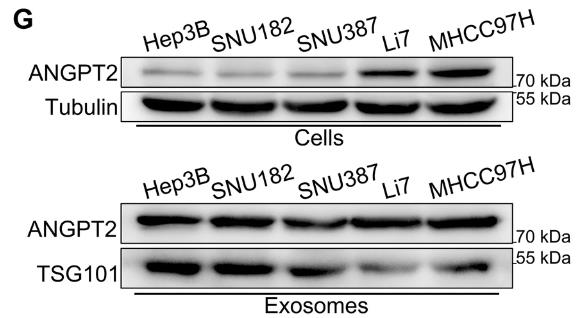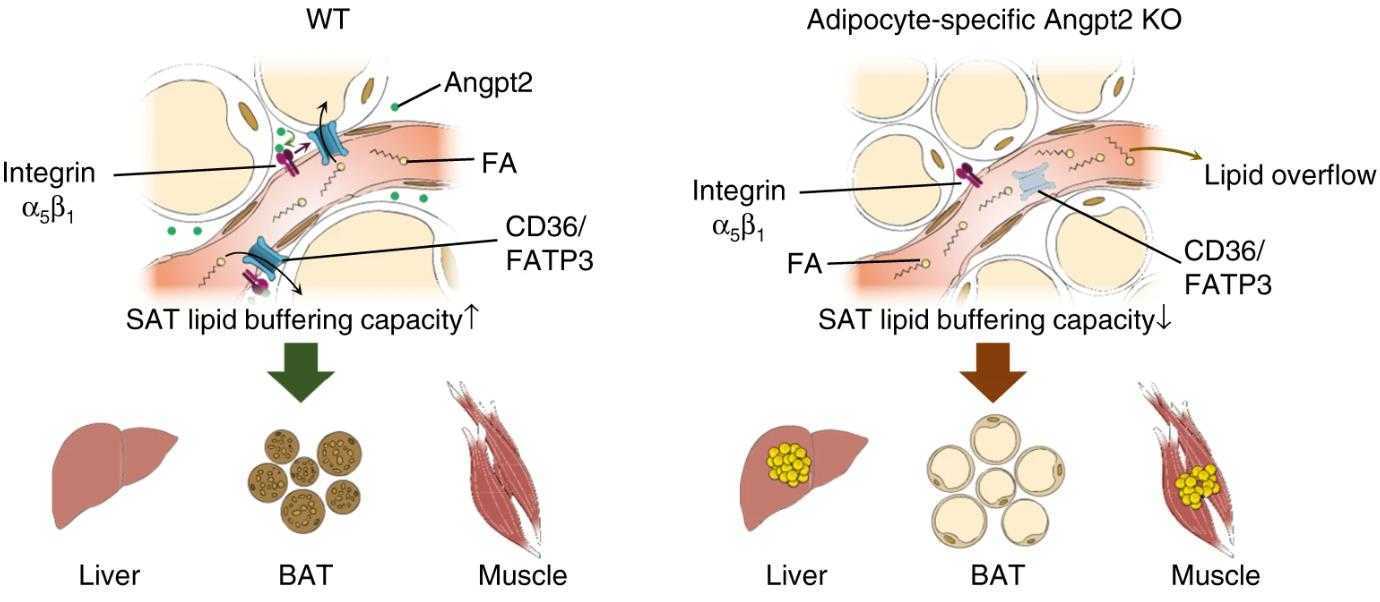Active Recombinant Human ANGPT2 protein(Met1-Phe496), His-tagged
| Cat.No. : | ANGPT2-3182H |
| Product Overview : | Recombinant Human Angiopoietin 2 (NP_001138.1) (Met 1-Phe 496) was expressed in HEK293, fused with a polyhistidine tag at the C-terminus. |
| Availability | April 18, 2025 |
| Unit | |
| Price | |
| Qty |
- Specification
- Gene Information
- Related Products
- Case Study
- Application
- Download
| Species : | Human |
| Source : | HEK293 |
| Tag : | His |
| Protein Length : | Met1-Phe496 |
| Form : | Lyophilized from sterile 2mM MOPS, 15mM NaCl, .5% CHAPS, pH 7. Normally 5 % - 8 % trehalose, mannitol and 0.01% Tween80 are added as protectants before lyophilization. |
| Bio-activity : | 1. Measured by its ability to bind recombinant human Tie2-His in a functional ELISA. 2. Measured by its ability to bind recombinant human Tie2-Fch in a functional ELISA. |
| Molecular Mass : | The recombinant human Ang2 consists of 489 amino acids and predicts a molecular mass of 56.4 kDa. As a result of glycosylation, the rhAng2 migrates as approximately 63.5 kDa band in SDS-PAGE under reducing conditions. |
| Endotoxin : | < 1.0 EU per μg of the protein as determined by the LAL method. |
| Purity : | > 92 % as determined by SDS-PAGE |
| Storage : | Samples are stable for up to twelve months from date of receipt at -20°C to -80°C. Store it under sterile conditions at -20°C to -80°C. It is recommended that the protein be aliquoted for optimal storage. Avoid repeated freeze-thaw cycles. |
| Reconstitution : | It is recommended that sterile water be added to the vial to prepare a stock solution of 0.2 ug/ul. Centrifuge the vial at 4°C before opening to recover the entire contents. |
| Gene Name | ANGPT2 angiopoietin 2 [ Homo sapiens ] |
| Official Symbol | ANGPT2 |
| Synonyms | ANGPT2; angiopoietin 2; angiopoietin-2; Ang2; ANG-2; Tie2-ligand; angiopoietin-2B; angiopoietin-2a; ANG2; AGPT2; |
| Gene ID | 285 |
| mRNA Refseq | NM_001118887 |
| Protein Refseq | NP_001112359 |
| MIM | 601922 |
| UniProt ID | O15123 |
| ◆ Recombinant Proteins | ||
| ANGPT2-1175C | Recombinant Rhesus Macaque ANGPT2(Tyr19-Phe495) Protein, C-Fc-tagged | +Inquiry |
| ANGPT2-388H | Recombinant Human ANGPT2 Protein, His-tagged | +Inquiry |
| ANGPT2-933H | Active Recombinant Human ANGPT2 Protein, His-tagged | +Inquiry |
| ANGPT2-27R | Recombinant Rabbit ANGPT2 Protein (19-496), C-6×His-tagged | +Inquiry |
| ANGPT2-537R | Recombinant Rabbit ANGPT2 protein, His-tagged | +Inquiry |
| ◆ Cell & Tissue Lysates | ||
| ANGPT2-2228HCL | Recombinant Human ANGPT2 cell lysate | +Inquiry |
| ANGPT2-001MCL | Recombinant Mouse ANGPT2 cell lysate | +Inquiry |
Case 1: Bae H, et al. Nat Commun. 2020
Storing excess dietary fat in subcutaneous adipose tissue (SAT) prevents insulin resistance caused by ectopic lipid deposits, but the exact mechanism is not clearly understood. This study uncovers that angiopoietin-2 (Angpt2) working through integrin α5β1 signaling specifically stimulates fat uptake in SAT. When Angpt2 is deleted in adipocytes, there is a significant drop in fatty acid uptake and storage in SAT, causing excess lipids to accumulate in tissues like skeletal muscle and liver, leading to insulin resistance. Angpt2 triggers integrin α5β1 signaling in blood vessel linings, facilitating fatty acid transport via CD36 and FATP3 into SAT. Blocking integrin α5β1, either genetically or with drugs, mimics the effects seen in Angpt2 deletion. These findings reveal Angpt2-integrin α5β1 signaling as crucial for distributing fat in SAT, highlighting the interaction between adipocytes and endothelium as a target to prevent lipotoxicity and insulin resistance.

Fig1. Representative images and comparisons of FA (BODIPY C-12, 8 μM) uptake in HUVECs after treatment with Angpt2.

Fig2. Comparisons of FA uptake at different concentrations with vehicle, Mn2+, Angpt2 or Mn2+ +Angpt2 treatment.
Case 2: Xie JY, et al. Cell Commun Signal. 2020
Hepatocellular carcinoma (HCC), a common type of liver cancer, features abundant blood vessels and makes angiopoietin-2 (ANGPT2) a significant target for therapies that block blood vessel growth. Exosomes, which are small vesicles facilitating intercellular communication, were studied to determine if they carry ANGPT2 from tumors. Through various assays, including immunoblotting and microscopy, we explored ANGPT2 in exosomes from HCC cells. In experiments involving HCC cell lines, researchers modulated ANGPT2 levels and introduced these exosomes to human endothelial cells, observing a distinct increase in blood vessel formation independent of the Tie2 pathway. Moreover, recipient cells recycled ANGPT2 from the exosomes. Reducing ANGPT2 via CRISPR-Cas significantly curtailed both new vessel formation and cancer cell changes linked to disease progression.

Fig1. Immunoblotting showed the levels of ANGPT2 in different HCC cell lines.

Fig2. HUVECs were cultured with ANGPT2-mCherry-expressing exosomes derived from HCC cells for 12 h.
The human ANGPT2 protein plays a critical role in angiogenesis and remodeling and is commonly observed in disease states such as tumors, growth abnormalities, and inflammation. The synthetic human ANGPT2 protein has many important applications in scientific research, especially in cancer research, to study the mechanisms of tumor vascularization and interactions with other vascular factors. In the laboratory, recombinant ANGPT2 protein is often used in cell proliferation experiments and as a standard to detect this protein level in serum samples.
In industrial applications, especially in biotechnology and drug development, the recombinant ANGPT2 protein becomes a strategic tool for the development of potential drugs targeting cancer and other diseases involving vascular abnormalities. It is often used as a recombinant ligand in receptor binding experiments in screening new drugs. In addition, ANGPT2 serves as a biomarker to help identify and monitor disease progression, providing data support for personalized medicine. Therefore, the recombinant ANGPT2 protein helps to ensure product consistency and quality control in commercial production to meet market demand.

Fig1. Endothelial-to-adipocyte fatty acid transport determines metabolic health. (Hosung Bae, 2020)
Not For Human Consumption!
Inquiry
- Reviews
- Q&As
Ask a Question for All ANGPT2 Products
Required fields are marked with *
My Review for All ANGPT2 Products
Required fields are marked with *
Inquiry Basket


